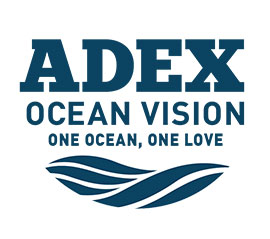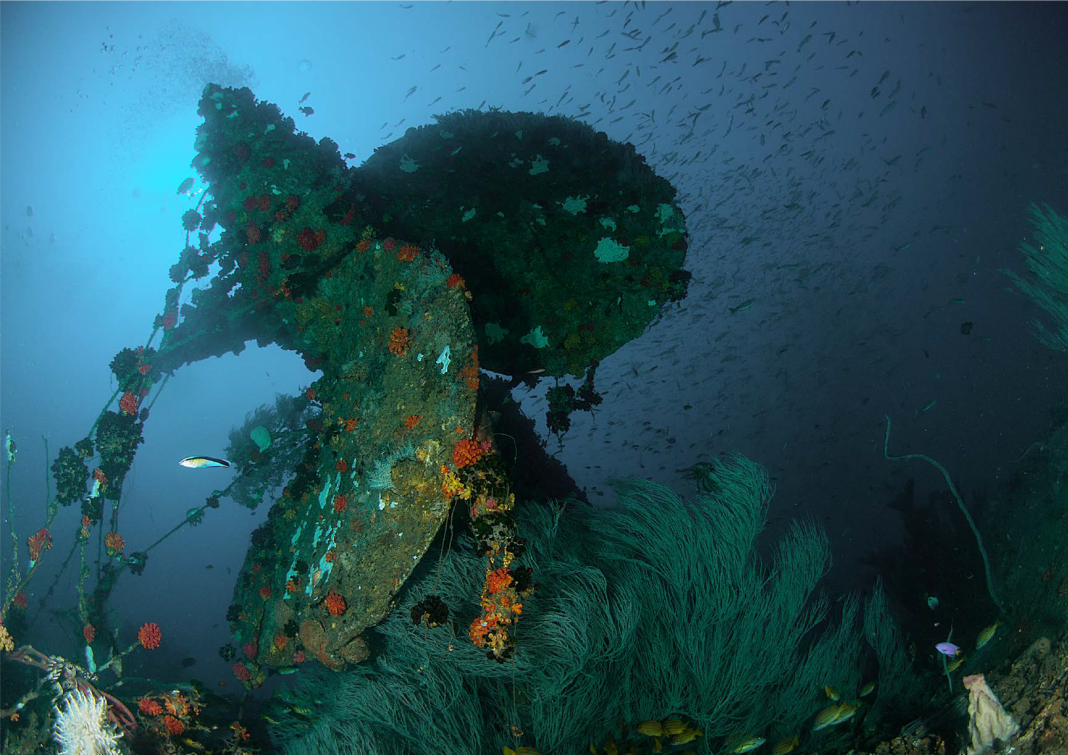Article extracted from Asian Diver Issue 04/2015 (139)
By Dharshana Jayawardena
THE MONTH OF April 1942, at the height of World War II, was a pivotal moment for Ceylon, as the country was known under its British rulers. A massive Japanese invasion was imminent and the same sea/airstrike group that lay devastation to Pearl Harbor, led by Vice Admiral Chuichi Nagumo, was now gathered southeast of the island, poised for a surprise attack.
Then, in what the famous wartime Prime Minister of Britain, Sir Winston Churchill later called “The most dangerous moment of World War II”, the Japanese unleashed a wave of airstrikes over the east coast of the island on April 9, 1942. One of their targets was the naval carrier group led by the HMS Hermes. The attack lasted only a few minutes, but Japanese VAL dive-bombers scored 40 direct hits on the defenceless carrier, causing it to sink within 10 minutes. Over 300 sailors died in the attack.
Today, the Hermes is one of the deepest dives and one of the best dive sites in Sri Lanka, lying 10 kilometres off the idyllic shores of Batticaloa, an easternmost town that was ravaged by three decades of war and the catastrophic tsunami of December 2004. The journey to Batticaloa can be arduous, often requiring a gruelling eight- to 10-hour drive through winding roads, thick jungles, fiercely inhospitable and uninhabitable bush country, and countless security checkpoints. Yet the trip is almost as exciting as the destination because brief detours can be made to two wonders of the ancient world: the magnificent rock fortress of Sigiriya and the ruins at Polonnaruwa.
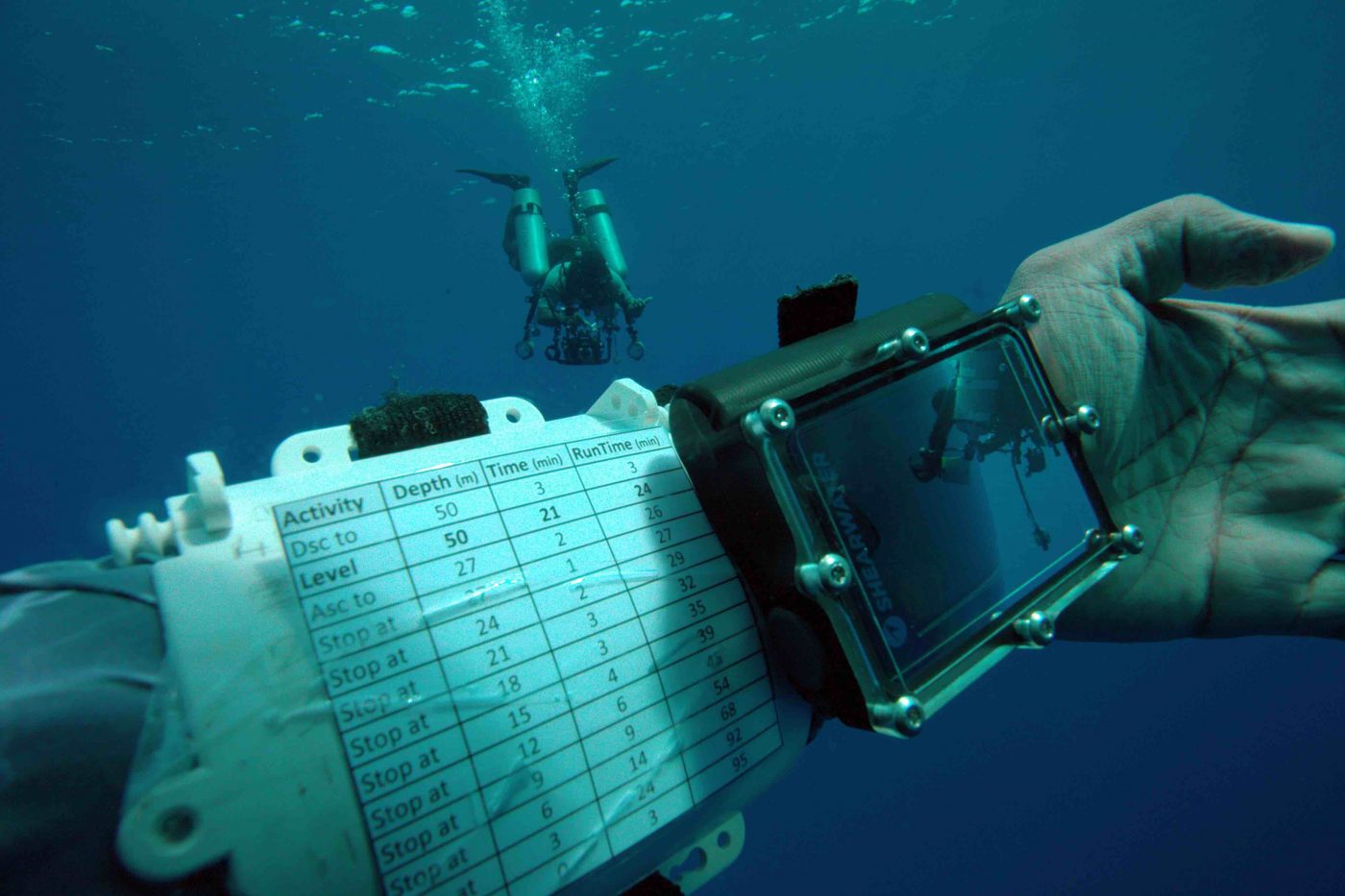
A typical dive plan to the Hermes is 25 minutes at the bottom with a primary dive computer, a backup computer and a plan on wrist slate as the third backup in case of computer failure.
At 53 metres deep, beyond recreational depth limits, the world of Hermes is surreal and dream-like. It is a mysterious shadow world of low light, with ominous-looking structures that loom over the seascape. Because of challenging conditions, it is a dive only for tek divers. While trimix is the best gas option to explore the Hermes, especially if you are new to tek diving, it is also possible to dive with air, especially if you have experience in deep air-diving.
The conditions can vary at the Hermes, depending on the month. A strong colder-water current can be experienced at depth and fighting against it can really impair the judgment of a diver because of severe narcosis when air-diving. Because of the currents and the size of the ship, it is sometimes impossible to get back to the anchor line, so divers should be prepared for a drifting ascent during the long hour of decompression. Given that this is a remote location with scant access to medical help and hours away from a decompression chamber, it is certainly a dive requiring immaculate planning, proper procedures and safety equipment.
When it sank, the Hermes tipped over and came to rest on its flight deck, partly propped up by the “island” or superstructure. At 183 metres long, the wreck is huge and requires many dives to thoroughly explore it. The keel of the ship is at a depth of 48 metres, and like a magical white forest in a mythical land, the entire hull is covered with a beautiful outcrop of large black coral. At 53 metres, most of the upper deck is buried and beyond reach. Yet, to this day, you can see the great Bofors guns of the lower deck, anti-aircraft guns, the island superstructure, a huge propeller, and the massive caverns that once led to the lower deck. Also strewn across the wreck are unused anti-aircraft shells. While most of the wreck is largely intact, the bombing damage in some areas is so severe that it is impossible to ascertain at which part of the ship you are positioned.
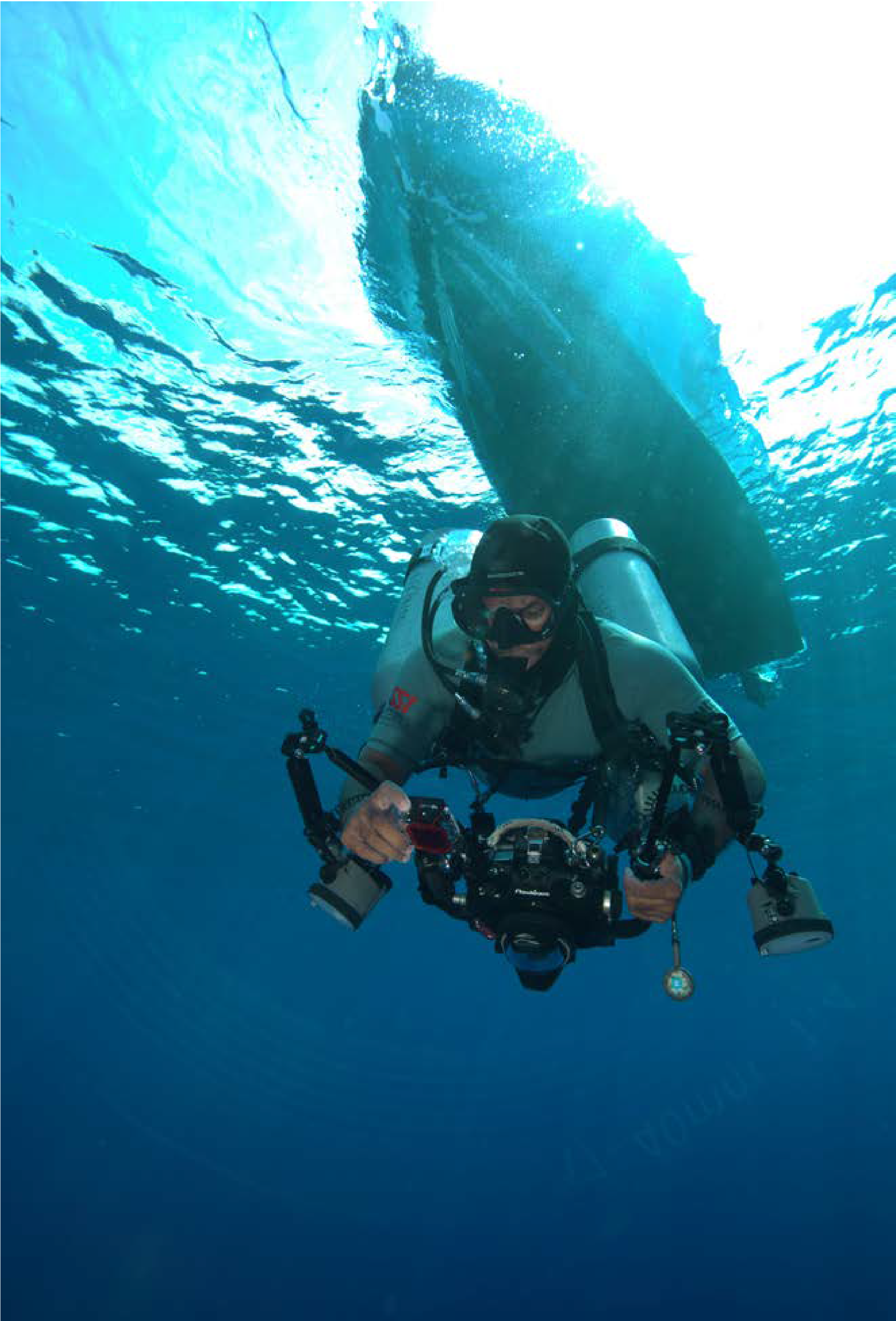
A sidemount tek diver during the last two stages of staged decompression stops
It is the teeming marine life at the Hermes site that sets it apart from many other dives in Sri Lanka. Here, especially during the months of August to October, sea creatures are in great abundance. Large potato cods peer curiously through the black coral at intruding divers. Massive shoals of mangrove and bluestripe snappers congregate over the keel like large rain clouds. Solitary great barracuda, packs of huge dogtooth tuna and giant trevally join this melee by hovering around the ship and waiting for an opportune moment to pounce on an unsuspecting victim. The Hermes, it seems, is the theatre for an eternal ballet of life and death between predator and prey. Sometimes, even bigger pelagics such as sailfish and passing Bryde’s whales can be seen.
April through October are the best months to dive the Hermes, earlier being better for visibility, but the latter period being more suitable for viewing marine life. Liveaboard access to the site is yet not available. The only access is by the tried and tested standard fishing boat that can battle the Sri Lankan surf. When surface conditions are choppy during rough seas, gearing up for an equipment-intensive tek dive while bobbing around requires some intestinal fortitude. May, June, and September could be the best months in terms of water clarity and surface conditions. July and August could be murky with rougher surface conditions to reckon with.
Diving the Hermes is an addictive venture and many who pledge to do it only once, return for more. Perhaps this is not so hard to fathom. After all, the Hermes presents a unique dive experience that epitomises incredible history and tragedy, rich marine life, exotic adventure, challenge, excitement and danger. Once savoured, it is an experience sought after to the point of obsession. For after diving the Hermes, you are irrevocably changed forever.
Like what you’ve read so far? Check out our ADEX India Virtual Expo Panel Discussion on Tek Talk: Diving Into the Unknown this Friday, 11 September 2020, at the following times:
Singapore – 3PM / India – 12.30PM / Maldives – 12PM/ Sydney – 5PM / New York – 3AM / London – 8AM / Paris – 9AM / Tokyo – 4PM
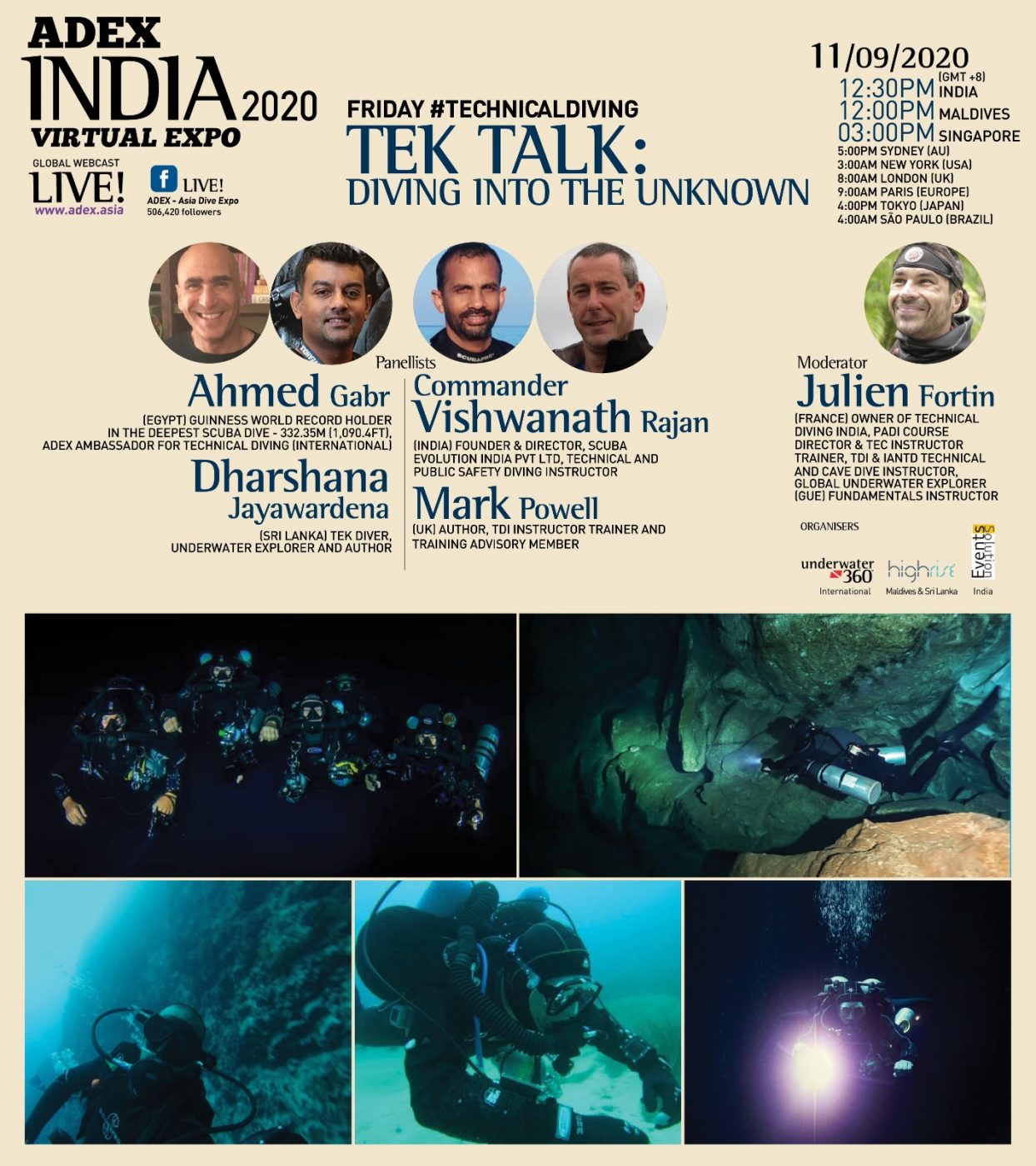
This panel features:
ADEX Ambassador for Tekdive (International), Guinness World Record Holder in The Deepest Scuba Dive (332.35m)
Underwater Explorer, Cave and Wreck Diver and Author of Ghosts of the Deep – Diving the Shipwrecks of Sri Lanka, PADI Course Director, Underwater Photo/Videographer, Owner of ODYDIVE Center
Technical & Public Safety Diving Instructor, Founder and Director Scuba Evolution India Pvt Ltd
Author, TDI Instructor Trainer and Training Advisory Panel Member
Moderated by:
Owner of Technical Diving India/Mexico, Cave Diver, Explorer, Professional Technical Diver – PADI Course Director & Tec Instructor Trainer, TDI & IANTD Technical & Cave Dive Instructor, GUE (Global Underwater Explorers) Fundamentals Instructor

